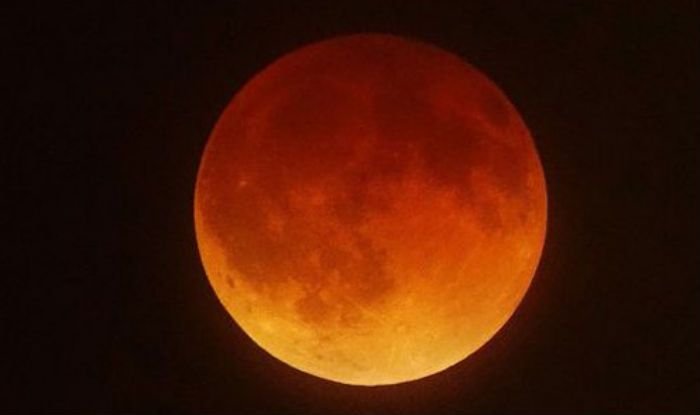A total lunar eclipse is all set to take place on the night of July 27, 2018, and the early ho urs of July 28. It is expected to be the longest blood moon witnessed in 100 years. The Moon will disappear into the Earth’s darkest shadow, known as the umbra. The Moon will be visible in a scarlet red hue for over 1 hour and 43 minutes, which is 40 per cent longer than any other blood moon measured in recent times.
urs of July 28. It is expected to be the longest blood moon witnessed in 100 years. The Moon will disappear into the Earth’s darkest shadow, known as the umbra. The Moon will be visible in a scarlet red hue for over 1 hour and 43 minutes, which is 40 per cent longer than any other blood moon measured in recent times.
For the unknown, a lunar eclipse has been termed as a phenomenon when Earth is aligned (falls in a line) directly with the Moon and the Sun, while the orbit of the Moon brings the orb into the Earth’s shadow. The Blood Moon 2018, on the other hand, will last for a longer period than other lunar eclipses this century (one hour and 43 minutes) since Moon will be passing through one of the darkest regions of the Earth’s shadow called as The Umbra’.
Know the Total Lunar Eclipse timing in India
The total lunar eclipse will be fully visible in Delhi. The penumbral eclipse will begin at 11:44 pm IST followed by a partial eclipse at 11:54 pm.
A total eclipse will start at 1:00 am (July 28). The moon, closest to the centre of the shadow, will showcase the maximum eclipse at 1:51 am.
At 2:43 am, the total eclipse will end. The partial eclipse will start again around 3:49 am. At 4:58 am, the penumbral eclipse will end. The total duration of the eclipse will be six hours and 14 minutes.
If we talk about the world, the lunar eclipse will be visible in South America, East Africa, the West Asia and central Asia.
Not only the lunar eclipse, but planet Mars can also be witnessed at the end of July. The Red Planet is on approach to its closest pass by Earth in decades. Mars, the Fourth Planet from the Sun, will align with the Earth and the Sun on July 27, for an annual event known as Opposition. This is when the Sun, Earth and Mars will be lined up perfectly, with Mars on the opposite side of Earth from the Sun. At that time, Mars will be up all night long, from dusk until dawn, and it will be crossing the sky with the Full Thunder Moon – the smallest, most distant apogee’ Full Moon of 2018. Coincidentally, this will also be the night of a Total Lunar Eclipse, which will be the longest total lunar eclipse for the next century.